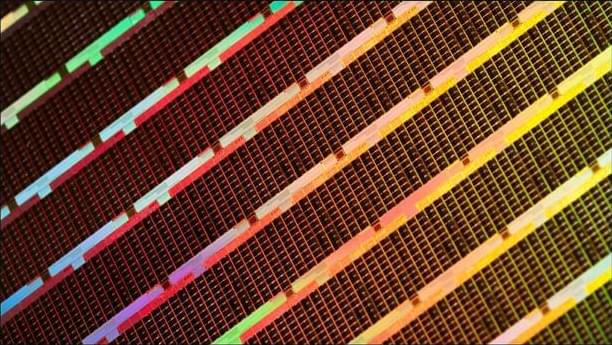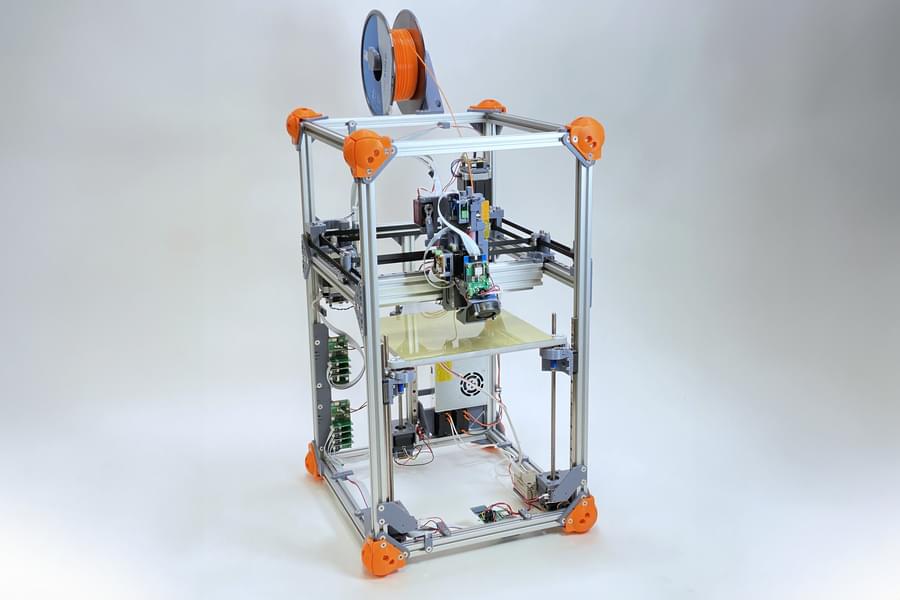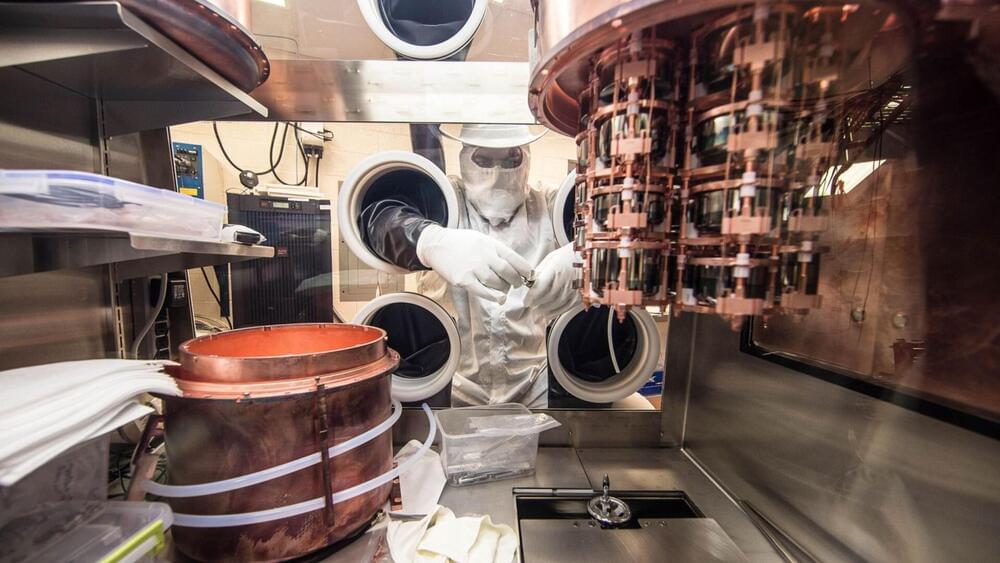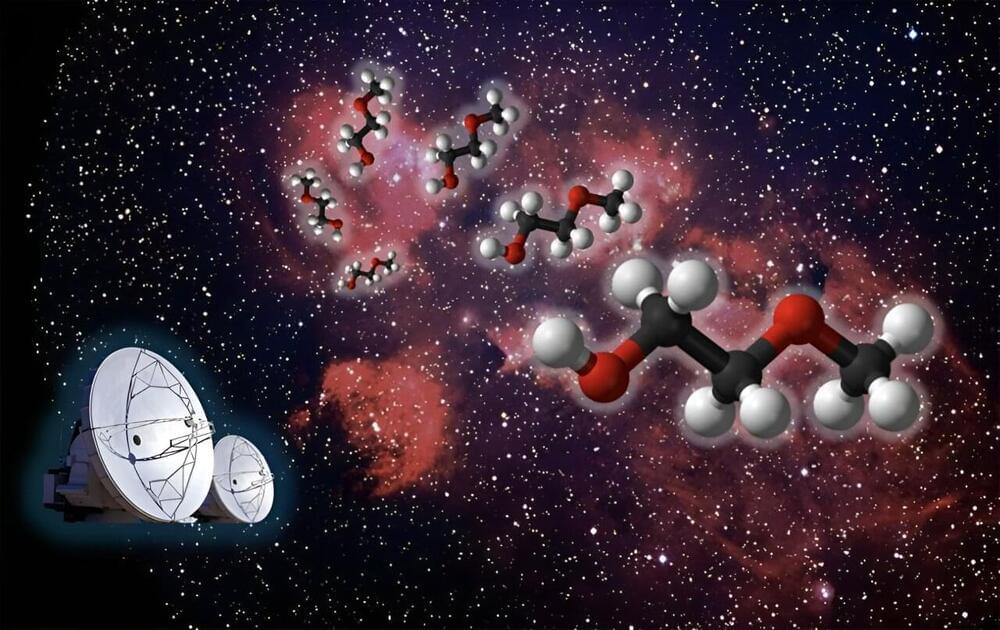Two piloted one-seat eVTOLs flew in formation during an exciting premiere by Jetson, opening the road for a wide range of missions in the future.




A team of scientists have developed a new FDM 3D printer that can automatically create parameters for unknown materials.
Material presets for mass-manufactured polymers can be found on most 3D printers. However, the 3D printing parameters for sustainable and recycled materials need to be manually adjusted. This trial and error process can be frustrating and time-consuming, limiting the adoption of environmentally friendly filaments.
Experts from MIT’s Center for Bits and Atoms (CBA), the U.S. National Institute of Standards and Technology (NIST), and Greece’s National Center for Scientific Research (Demokritos) are working to change this.
The galaxy is a vast place with billions of potential new worlds for humanity to colonize, but interstellar space is so enormous that reaching even the nearest stars and planets by spaceship would take decades at best, and maybe many centuries. Even on arrival terraforming those barren planets would take just as long.
Two options for overcoming the immensity of space and time are the Seed Ship and the Data Ship, automated vessels able to colonize the worlds for us. We will examine those today, their advantages, limitations, and misconceptions, and variations of them we might use to seed the stars.
Join this channel to get access to perks: / @isaacarthursfia.
Visit our Website: http://www.isaacarthur.net.
Join Nebula: https://go.nebula.tv/isaacarthur.
Support us on Patreon: / isaacarthur.
Support us on Subscribestar: https://www.subscribestar.com/isaac-a… Group: / 1,583,992,725,237,264 Reddit:
/ isaacarthur Twitter:
/ isaac_a_arthur on Twitter and RT our future content. SFIA Discord Server:
/ discord Listen or Download the audio of this episode from Soundcloud: Episode’s Audio-only version:
/ seeding-the-stars Episode’s Narration-only version:
/ seeding-the-stars-narration-only Credits: Seeding the Stars Episode 166, Season 4 E52 Writers: Isaac Arthur Editors: Alex Chamak A.T. Long Cooper de Ruiter D. Hemanshi Daniel McNamara Darius Said Edward Nardella Evan Schultheis Keith Blockus Mark Warburton Matthew Acker Safia Postgate Stuart Graham https://beyondnerva.wordpress.com Sigmund Kopperud Producer: Isaac Arthur Cover Artist: Jakub Grygier https://www.artstation.com/jakub_grygier Graphics Team: Bryan Versteeg http://spacehabs.com Darth Biomech https://www.artstation.com/darth_biomech Fishy Tree https://www.deviantart.com/fishytree/ Jarred Eagley Jeremy Jozwik https://www.artstation.com/zeuxis_of_… Justin Dixon LegionTech Studios Mihail Yordanov Sam McNamara Serigio Botero https://www.artstation.com/sboterod?f… SpaceResourcesCGI Audio Editing Eric Schneider Narrator: Isaac Arthur Music Manager: Luca DeRosa — [email protected] Music: Markus Junnikkala, “Plotting a Course” https://www.markusjunnikkala.com/ Paradox Interactive, Andreas Waldetoft, “Dark Minds” https://www.paradoxplaza.com Lombus, “Hydrogen Sonata” https://lombus.bandcamp.com Paradox Interactive, “In Search of Life” https://www.paradoxplaza.com Serena Elis, “Between the Space”
/ serenaelis Taras Harkavyi, “Alpha-and-…” https://www.discogs.com/artist/625697… Paradox Interactive, Andreas Waldetoft, “The Birth of a Star” https://www.paradoxplaza.com Ayreon, “The Theory of Everything, Part 1″
/ @arjenalucassen.
Facebook Group: / 1583992725237264
Reddit: / isaacarthur.
Twitter: / isaac_a_arthur on Twitter and RT our future content.
SFIA Discord Server: / discord.
Listen or Download the audio of this episode from Soundcloud: Episode’s Audio-only version: / seeding-the-stars.
Episode’s Narration-only version: / seeding-the-stars-narration-only.
Credits:
Seeding the Stars.
Episode 166, Season 4 E52
Writers:
Isaac Arthur.
Editors:

“Extracting reliable records from rocks this old is extremely challenging, and it was really exciting to see primary magnetic signals begin to emerge when we analyzed these samples in the lab.” said Dr. Claire Nichols.
How long has the Earth’s magnetic field existed? This is what a recent study published in the Journal of Geophysical Research Solid Earth hopes to address as a team of international researchers discovered evidence indicating that the Earth’s magnetic field existed as far back as 3.7 billion years ago and was approximately half as strong as it is today, which puts this as the oldest evidence of Earth’s magnetic field to date. This study holds the potential to help scientists better understand the processes responsible for producing the Earth’s magnetic field, which is responsible for shielding the planet’s atmosphere and surface from harmful space weather.
For the study, the researchers analyzed iron-bearing rock formations among the Isua Supracrustal Belt in Southern West Greenland whose iron particles record the direction and strength of the magnetic field and are locked in time due to crystallization. In the end, the researchers determined that the iron particles exhibit evidence of the Earth’s magnetic field from 3.7 billion years ago along with its strength being half of what it is today.

In a new study published inNature Physics, scientists at the MAJORANA Collaboration have tested the stringency of charge conservation and Pauli’s exclusion principles using underground detectors. Alessio Porcelli has published a News & Views piece on the research in the same journal.
Today, the Standard Model of particle physics is one of two pillars on which modern physics rests. It successfully explains three out of the four fundamental forces and how subatomic particles behave.
Pauli’s exclusion principle and the conservation of charge are two of the principles arising from the symmetries in the Standard Model. They have withstood many theoretical challenges and have repeatedly proven to the point where they are considered axiomatic.

New research from the group of MIT Professor Brett McGuire has revealed the presence of a previously unknown molecule in space. The team’s open-access paper, “Rotational Spectrum and First Interstellar Detection of 2-Methoxyethanol Using ALMA Observations of NGC 6334I,” was published in the April 12 issue of The Astrophysical Journal Letters.
Zachary T.P. Fried, a graduate student in the McGuire group and the lead author of the publication, worked to assemble a puzzle comprised of pieces collected from across the globe, extending beyond MIT to France, Florida, Virginia, and Copenhagen, to achieve this exciting discovery.
“Our group tries to understand what molecules are present in regions of space where stars and solar systems will eventually take shape,” explains Fried. “This allows us to piece together how chemistry evolves alongside the process of star and planet formation. We do this by looking at the rotational spectra of molecules, the unique patterns of light they give off as they tumble end-over-end in space.

In a recent interview, NVIDIA CEO Jensen Huang shared his vision for the future, predicting that humanoid robots will soon become mainstream products, revolutionizing various industries.
Huang emphasized that manufacturing costs for humanoid robots will be surprisingly low, comparable to the price range of cheap cars. He proposed a price range of $10,000 to $20,000 for these robots, making them accessible to a wide range of consumers.
Drawing parallels with the automotive industry, Huang highlighted the potential flexibility and versatility of robots in certain man-made environments. He suggested that these robots could handle dangerous, repetitive, or tedious tasks, enhancing efficiency and safety in workplaces.
Join us on Patreon! https://www.patreon.com/MichaelLustgartenPhDDiscount Links: NAD+ Quantification: https://www.jinfiniti.com/intracellular-nad-test/Use Cod…